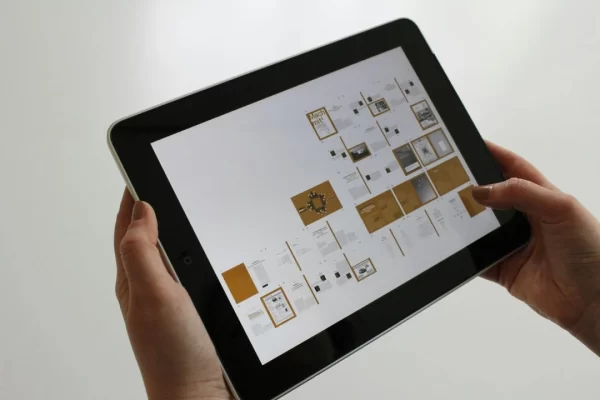Creating a website is more than just presenting information; it’s about building trust, fostering relationships, and providing a meaningful user experience. Ethical web design plays a crucial role in ensuring your website is not only functional but also responsible and transparent. By following ethical web design principles, you can create a platform that benefits users, businesses, and society.
In this guide, we’ll explore what ethical web design is, key principles to follow, practical strategies to implement, and solutions for overcoming common challenges.
What is Ethical Web Design?
Defining Ethical Web Design
Ethical web design refers to designing websites in a way that prioritizes user welfare, honesty, and transparency. It ensures that the website respects the user’s rights, avoids manipulation, and builds trust through fair and responsible practices.
Why Ethical Web Design Matters
- Builds Trust: Honest and transparent websites foster long-term relationships with users.
- Improves User Experience: Ethical practices result in clear navigation, accessible content, and intuitive design.
- Enhances Brand Reputation: Businesses that prioritize ethics are seen as more credible and trustworthy.
Ethical Web Design Principles
1. Respect Your Users
Respecting your users means prioritizing their experience and well-being throughout the design process.
- Create Accessible Designs: Ensure your website is inclusive to people with disabilities by following Web Content Accessibility Guidelines (WCAG).
- Use Clear Navigation: Simple menus, intuitive layouts, and easily identifiable CTAs (Call to Actions) help users find information quickly.
- Minimize Intrusive Elements: Avoid excessive pop-ups, auto-play videos, and other distractions that frustrate users.
2. Honesty and Transparency
Honest design ensures users know what to expect and feel confident in your brand.
- Avoid Deceptive Practices: Refrain from using dark patterns — design tactics that trick users into actions they didn’t intend.
- Provide Clear Terms: Display privacy policies, cookie usage, and terms of service in clear, non-technical language.
- Be Transparent About Data Collection: Inform users about what data you collect and why, giving them control over their privacy settings.
3. Building Trust and Loyalty
Trust is built by consistently delivering value and meeting expectations.
- Deliver on Promises: If you offer a discount, ensure users receive it without hidden conditions.
- Maintain Reliable Performance: Regularly update your site to prevent technical issues that may frustrate users.
- Provide Excellent Customer Support: Ensure your support system is responsive and helpful.
4. Personalisation and Customisation
Tailoring content to individual users enhances engagement and satisfaction.
- Use Data Responsibly: Personalisation should improve user experience, not exploit data for manipulation.
- Empower Users: Allow users to customise preferences, notifications, and content recommendations.
5. Protect User Rights
Users have the right to control their data and online experience.
- Enable Opt-Out Options: Provide clear instructions for users who want to disable tracking.
- Offer Clear Consent Forms: Obtain explicit consent for data collection without pressuring users.
Building Trust with the User
Creating a Transparent Experience
Being transparent builds credibility. Provide clear information about:
- Pricing models
- Delivery timeframes
- Refund policies
- Data collection practices
Demonstrating Accountability
Take responsibility for errors or technical issues. Promptly notify users of site downtime, security concerns, or delays in promised services.
Transparency and Honesty
Clear Communication
Use language that is easy to understand. Avoid technical jargon when explaining policies or processes.
Avoiding Manipulative Tactics
Common manipulative tactics to avoid include:
- Hidden Fees: Ensure costs are fully disclosed upfront.
- Forced Actions: Avoid designs that pressure users into making decisions they aren’t comfortable with.
Personalisation and Customisation
How Personalisation Enhances User Experience
By adapting content to user preferences, you can improve satisfaction and engagement.
- Location-Based Recommendations: Display region-specific offers or content.
- Customised Layouts: Allow users to modify dashboard arrangements or content categories.
Ethical Data Usage
Ensure all data collection methods are transparent and consent-based. Avoid excessive data requests that may violate user privacy.
Rights of the User
Inform Users About Data Usage
Be upfront about how personal data is collected, stored, and used.
Provide Control Options
Give users the ability to:
- Edit or delete their data
- Opt out of data tracking
- Change communication preferences
The Art of Web Design is Holistic
Balancing Design, Content, and Usability
Successful web design combines aesthetics, functionality, and user-centric content. Focus on:
- Engaging Visuals: Use attractive yet clean designs.
- Valuable Content: Offer clear, informative text that answers user needs.
- Smooth Navigation: Provide intuitive menus and logical content flow.
Aligning with Business Goals
Connect your design strategy with the company’s mission to maintain ethical standards while achieving business objectives.
How to Make Your Design More Ethical
Start with a Clear Strategy
Planning ethical practices from the beginning is crucial. Consider:
- Inclusive Design Techniques: Design for a diverse audience with varying abilities.
- Privacy-Centric Practices: Implement clear opt-in features and data protection measures.
Educate Stakeholders
Communicate the importance of ethical design to clients, developers, and content creators to ensure everyone aligns with these principles.
Ethical Design Challenges and Solutions
Common Challenges
- Time Constraints: Developers may feel pressured to skip ethical considerations for speed.
- Budget Limits: Ethical solutions may require additional investment.
Practical Solutions
- Prioritise Key Features: Focus on ethical elements that have the greatest impact.
- Educate Your Team: Train designers and developers on best practices.
- Collaborate with Clients: Explain the long-term benefits of ethical design to gain client support.
FAQs
What is ethical web design?
Ethical web design involves creating websites that respect user rights, prioritize honesty, and enhance the overall user experience.
Why is ethical web design important?
It builds trust, improves user satisfaction, and strengthens brand credibility, contributing to long-term business success.
How can I make my website more ethical?
Incorporate accessible design features, prioritize data transparency, and ensure your site delivers on promises.
What are dark patterns in web design?
Dark patterns are manipulative design tactics that trick users into unintended actions, such as signing up for services or purchasing items.
How does personalization align with ethical web design?
When done responsibly, personalisation enhances the user experience without compromising privacy or consent.
Conclusion
Ethical web design is essential for creating user-friendly, trustworthy, and responsible websites. By respecting user rights, maintaining transparency, and focusing on positive experiences, businesses can build stronger relationships and improve their online presence. Implementing these principles from the start ensures your website thrives in both user satisfaction and search engine rankings.
Contact our Digital Rescue team if you wish to work with a web design agency Melbourne brands trust and are committed to providing high-quality, ethical online design, development and management services. Contact us today, and our team will be more than happy to assist!



